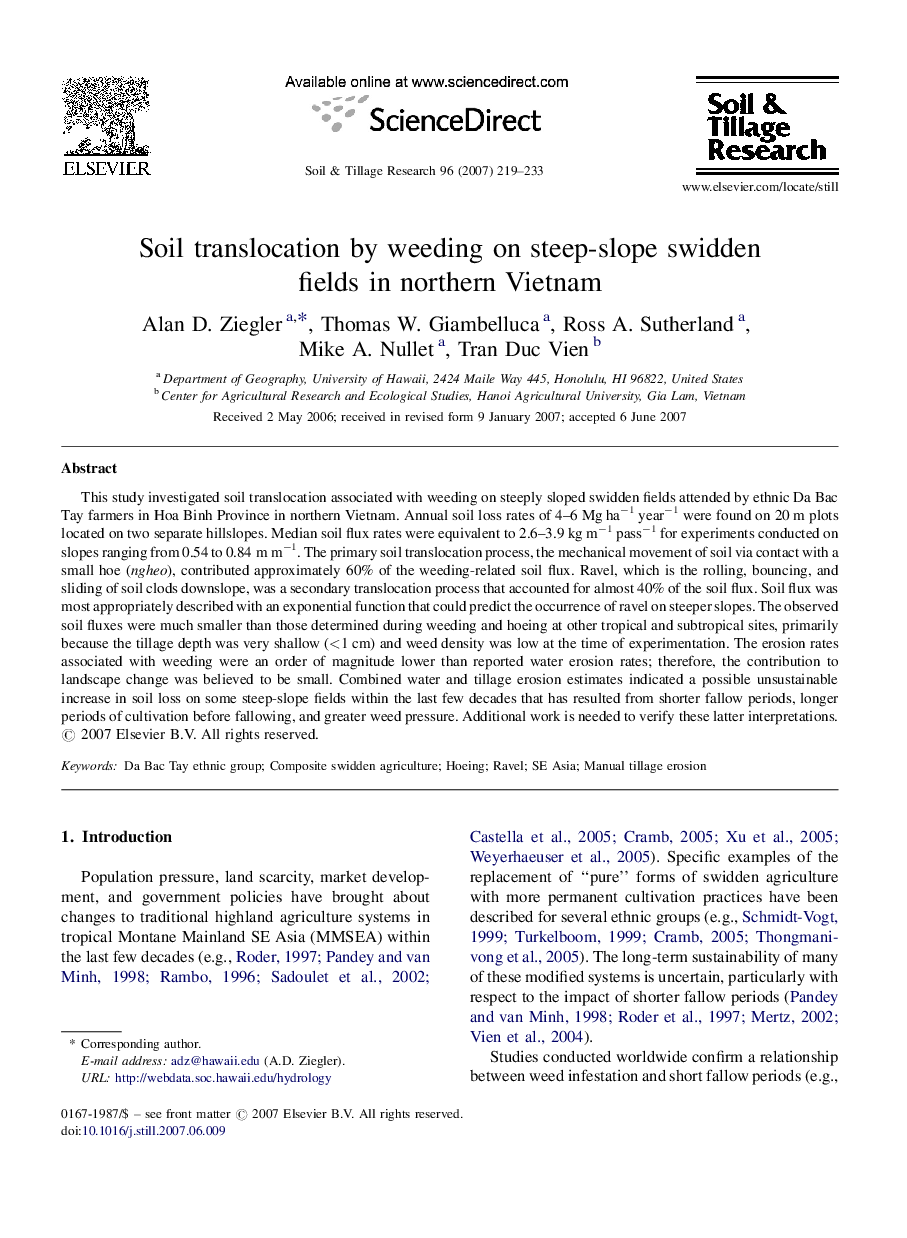| Article ID | Journal | Published Year | Pages | File Type |
|---|---|---|---|---|
| 306550 | Soil and Tillage Research | 2007 | 15 Pages |
This study investigated soil translocation associated with weeding on steeply sloped swidden fields attended by ethnic Da Bac Tay farmers in Hoa Binh Province in northern Vietnam. Annual soil loss rates of 4–6 Mg ha−1 year−1 were found on 20 m plots located on two separate hillslopes. Median soil flux rates were equivalent to 2.6–3.9 kg m−1 pass−1 for experiments conducted on slopes ranging from 0.54 to 0.84 m m−1. The primary soil translocation process, the mechanical movement of soil via contact with a small hoe (ngheo), contributed approximately 60% of the weeding-related soil flux. Ravel, which is the rolling, bouncing, and sliding of soil clods downslope, was a secondary translocation process that accounted for almost 40% of the soil flux. Soil flux was most appropriately described with an exponential function that could predict the occurrence of ravel on steeper slopes. The observed soil fluxes were much smaller than those determined during weeding and hoeing at other tropical and subtropical sites, primarily because the tillage depth was very shallow (<1 cm) and weed density was low at the time of experimentation. The erosion rates associated with weeding were an order of magnitude lower than reported water erosion rates; therefore, the contribution to landscape change was believed to be small. Combined water and tillage erosion estimates indicated a possible unsustainable increase in soil loss on some steep-slope fields within the last few decades that has resulted from shorter fallow periods, longer periods of cultivation before fallowing, and greater weed pressure. Additional work is needed to verify these latter interpretations.
